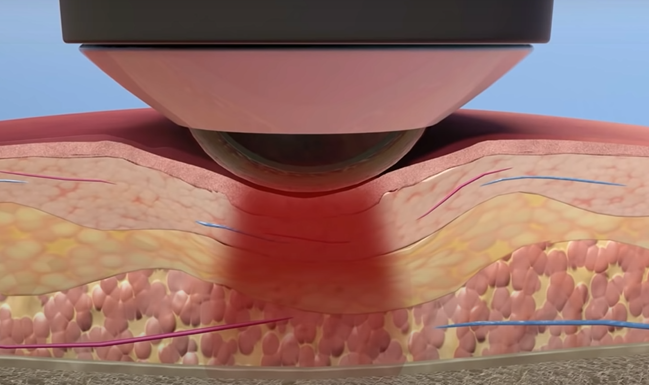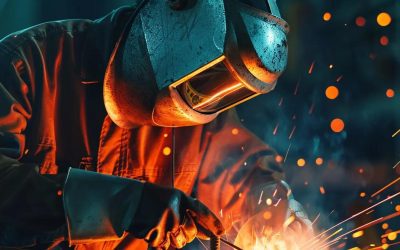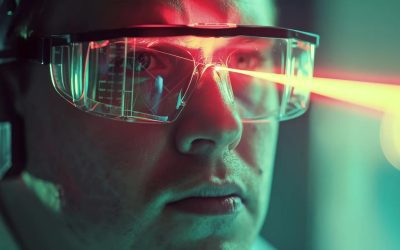Medical Laser Therapy in Action
Lasers have transformed the way medical procedures are done. Cosmetic procedures, vision correction, teeth whitening, surgery and tattoo removal have all benefited from the use of a specialized laser. Deep tissue laser therapy can be used to stimulate healing as the video shows. [1]
Health Care Laser System Regulation
Medical device lasers are regulated by the FDA [2], and some states have additional regulations on Health Care Laser Systems (HCLS), such as licensing, registration and training. It is the manufacturer’s responsibility to comply with FDA regulations for production of HCLS [3], and it is the responsibility of the Laser Safety Officer (LSO) to comply with state regulations for registration, licensing, installation and operation of the individual device.
HCLS are often used as medical devices in hospitals, surgery centers, dental offices, veterinarian offices, salons, and spas. The HCLS apparatus includes the following components:
- Laser output delivery system
- Laser power supply, controls, and calibration features
- Laser housing/enclosure, interlock, barrier
- Coolant liquids or gasses
Use of HCLS outside of hospitals is common, especially in the case of private practice medical offices, veterinarian offices, dental offices, salons, and spas.
Laser Safety Officer Responsibilities
Needless to say, where lasers are in use on humans and animals, laser safety is of paramount importance. Therefore, procedural controls must be adhered to during use of Class 3B and Class 4 laser systems. The Laser Safety Officer (LSO) is responsible for safety control measures and many other duties such as:
- Adherence to policies & procedures (P&Ps or SOPs)
- Designated control panel operator and designated light output operator
- Documentation of authorized HCP laser operators
- Proper storage (removal of interlock keys
- Awareness of emergency stop button
- Application of safe mode or standby mode when laser procedure is not in process
- Avoidance of specular reflection from tools during operation (polished surgical steel)
- Isolation of multiple floor controls during operation.
Respiratory protection (respirators, breathing filter masks, etc.) are part of the personal protective equipment for laser operator during medical procedures. They are intended to limit the inhalation of bacteria, viruses, gasses, and vapors.
It should be noted that the current state of Personal Protective Equipment (PPE) for inhalation prevention is limited and does not completely protect the user. Surgical masks are not sufficient because they are only designed to contain nasal and oral contaminants that may originate from the surgeon themselves. Respirators and breathing filter masks may partially protect the laser user, but they must be used in conjunction with the exhaust ventilation system. Such equipment must comply with OSHA respiratory protection standards.
Lasers are capable of emitting secondary radiation which is not part of the primary beam radiation. For example, charge tubes on gas lasers can emit ultraviolet radiation that may exceed the Maximum Permissible Energy (MPE). Note that ultraviolet radiation can sometimes cause cataracts. Charge tubes and diode pump lamps should be shielded by the manufacturer. Additionally, when the primary beam interacts with bone tissue, the light can be scattered and reflected, causing a bright spot at the point of incidence. This light can be extremely bright and require goggles for viewing. Bone interaction with laser light can also cause plasma radiation.
It is extremely important to properly label each laser system with warnings according to the laser class.
How can Laser Safety Certification help?
At Laser Safety Certification, we provide on-line courses for laser safety and Laser Safety Officer (LSO) certification programs. We can train you and your staff in OSHA recommended laser safety practices and proper PPE usage. For more information about healthcare specific laser safety, check out our courses for Healthcare Laser Safety and Healthcare LSO certification today. We also have an FAQ section with common answers about our courses, certification options and kit offerings for your LSO to build your own safety program. Get started today by enrolling your company. You can always email us at info@lasersafetycertification.com if you have any questions.
References
[1] RichterChiropractic YouTube video: https://www.youtube.com/watch?v=v_8b1tPU8w4
[2] FDA Medical Lasers website: https://www.fda.gov/radiation-emitting-products/surgical-and-therapeutic-products/medical-lasers
[3] FDA Laser Products and Instruments website: https://www.fda.gov/radiation-emitting-products/home-business-and-entertainment-products/laser-products-and-instruments




